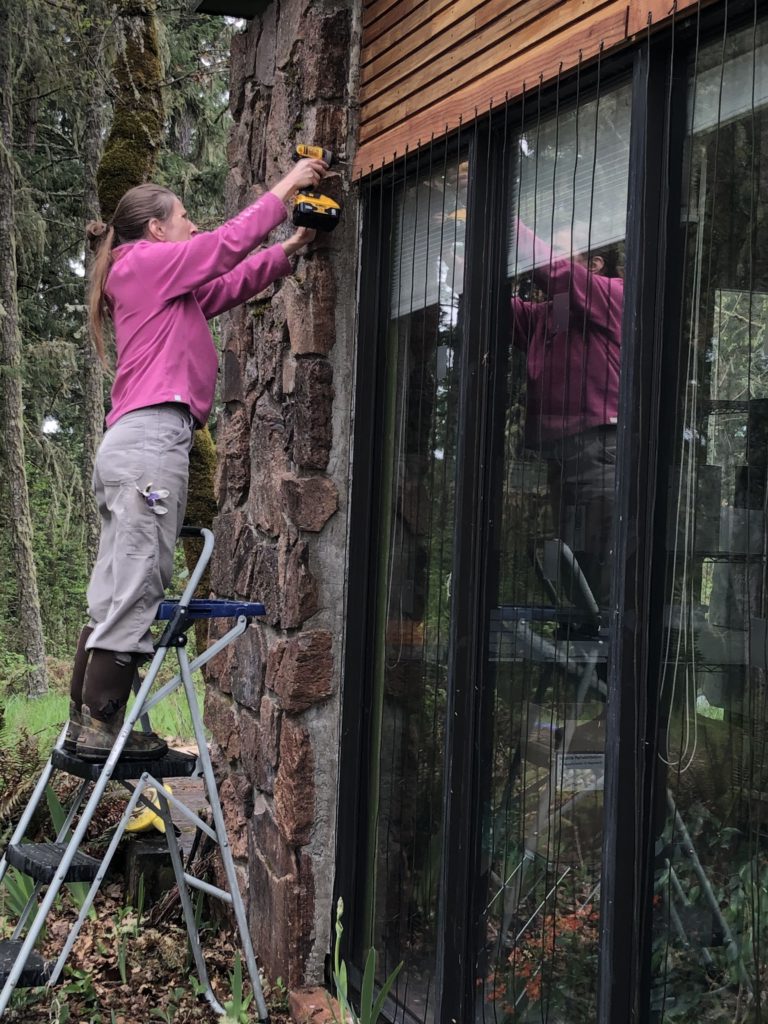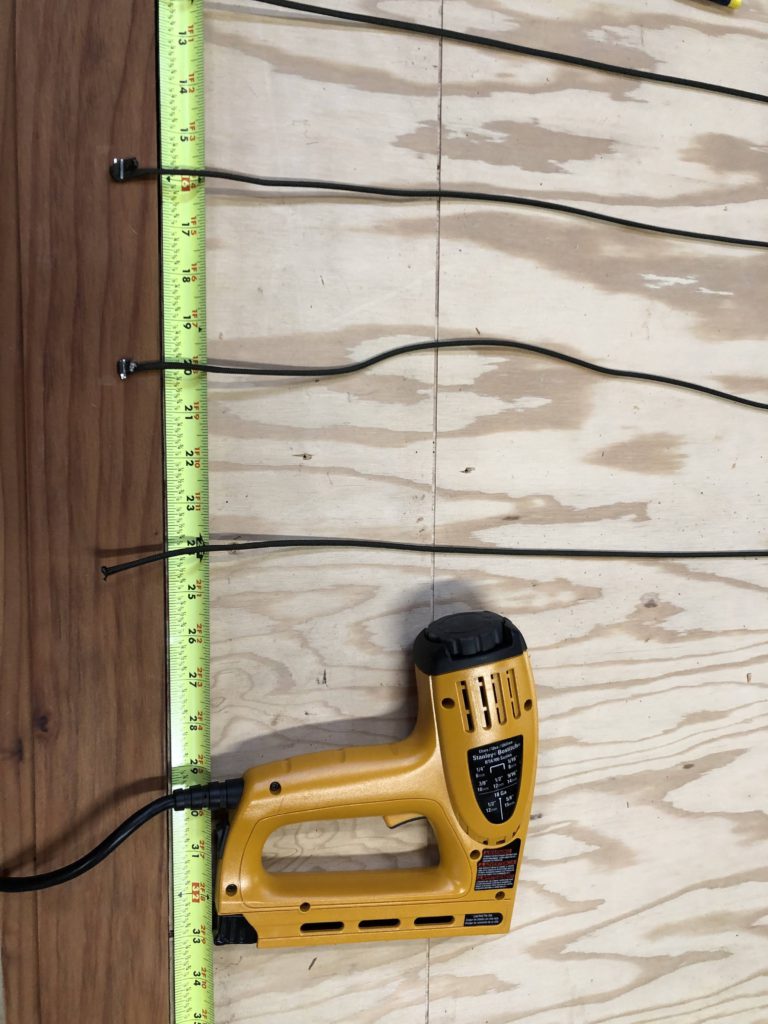It was a warm, late summer day in 2020. Like many people, I was working from home, sitting in my living room, laptop on my knees, coffee at my side. Suddenly I heard a very loud THUNK in the vicinity of our back door. I sprang up and ran to the back of the house. I knew there was only one thing that could make that sound. Something had hit the glass on our back door, something big.
I rounded the corner and felt simultaneously relieved and concerned. Sitting on our porch bench was a perplexed juvenile Cooper’s Hawk. It was obvious that despite the many UV decals attached to the door, it had hit the glass. It sat shaking its head and turning it side to side. I watched carefully. In another minute it was gone, back on the hunt.
Window strikes account for approximately 1 billion bird deaths a year in the US and Canada alone. Any social media group about birds will yield example after example of birds that have hit windows. While some survive and fly away, there are many that do not. For the layperson this is often a unique event, but for those of us involved in wildlife rehabilitation and conservation this is an all too common occurrence. With that in mind, let’s look at resources we can share and ways we can work to prevent window strikes, locally and beyond.
Making Windows Safer at Home
Identify if any windows are more problematic than others. While all windows can pose a problem, there are things that make some windows more of a threat. Windows reflect the world outside, making it appear to a bird that they are flying toward habitat, instead of a solid object. Factors that may make certain windows more hazardous include having food sources nearby, plants visible inside, or large picture windows.
Any window where you have had a previous strike should be flagged. If you are fortunate enough to not have had any bird fatalities, start by flagging the most reflective windows. When looking for reflections try to look at various angles, heights, and distances, concentrating on areas where you see birds frequently. Even if you don’t see a reflection head on, a ground feeding bird, like a dove, might. Keep in mind that as the sun moves reflections may change.
Quick Fix
Applying a substance to the outside of the window is one of the easiest ways to decrease collisions. Drawing lines, patterns or pictures with soap or tempera paint is easy and quick. You can wash and reapply as needed. The important thing about executing such patterns is ensuring the lines are close enough together to prevent a bird from attempting to fly through them. To deter all species, including hummingbirds, a gap of 2’’ (5 cm) is recommended1.
UV and Reflectives
Other popular deterrents are UV decals or reflective ribbons. You can purchase these in different shapes or styles. Ribbons move in the wind and are meant to keep birds from approaching windows.The decals work because birds see UV light, so the decals stand out against the glass. However, the decals may not work equally for all birds and generally need to be replaced every 6 months. Like designs made with soap or paint, decals must be placed so that birds do not attempt to fly between them.
Semi-permanent
If you are looking for more permanent solutions, but don’t want to retrofit windows. Shutters, screens and vertical blinds on the outside of the window may provide a happy medium. Closing shutters is ideal if you are not using windows. In addition to preventing collisions they also act to help insulate the home, saving money on cooling and heating2. In more clement weather, screens can be used to help protect birds from injury. When the bird hits the screen it acts as a cushion, and the bird bounces off. Acopian Birdsavers (Zen blinds) are another window accessory that are effective and gaining popularity amongst bird enthusiasts. The blinds are made of paracord spaced closely together. Birds actively try to avoid the strings as they would a stick in their environment.
Windows in your Community
Keeping birds safe doesn’t just take place at home. Working in your community to prevent window strikes is essential. This can be as simple as ensuring decals or other deterrents are placed appropriately on your work building or as involved as advocating that your building follows bird safe guidelines. While it may be daunting to approach the subject with corporate leaders there is value, even to lay people, in ensuring a building is mitigating bird strikes. The value of data in this endeavor cannot be overemphasized. It is one thing to request a business make their building safer, it is quite another to demonstrate the impact of indifference with data, including public relations, monetary, and ecological costs.
While the number of bird deaths attributed to glass is devastating, there are positive changes being made. Some cities now require new buildings to be made with bird safe designs. For building owners in the United States, buildings can be LEED certified by the U.S. Green Building Council, part of the certification involving bird safety. The American Bird Conservancy is also working to launch the Bird City Americas program, a program that works to decrease bird loss on many fronts, including glass collisions.
Our bird populations are in decline across the globe. While we may not be able to affect things as quickly or broadly as we would prefer, we can each take small steps to conserve birds in our own community. While this may seem like a small contribution, every bird counts, and moves us toward a better future.
More Reading
Selected Journal Papers
Factors influencing bird-building collisions in the downtown area of a major North American city
Drivers of Bird Window Collisions in Southern South America
Winter bird-window collisions: mitigation success, risk factors, and implementation challenges
Resources on Window Strikes and Prevention
American Bird Conservancy: Glass Collisions





Leave a Reply
You must be logged in to post a comment.